Solar Mythology and the Jesus Story
The Biblical Jesus Christ is a combination of an Astrological Allegory for the new Lord - our Sun combined with the story of human Andronicus Christ of the Crimea
Comparative Religion — The basic plot of the Jesus Story, including the motif of a crucified savior, already existed in many other religions long prior to the alleged time of Jesus. This also has been thoroughly covered elsewhere by other people (click here for more information). Solar Mythology — The Jesus Story is actually an allegory for what would naturally be the oldest and most important story humans would notice and write down, that of the annual passage of the seasons of the year. The position of the Sun against the celestial sphere changes during the year. This is explained below. (For a more thorough explanation see Lessons on Solar Mythology)
Ancient People Looked At The Stars
In ancient times people were very familiar with the Sun and the stars. At night they had nothing better to do than gaze up at the stars. They didn't conquer darkness with the flip of a light switch like we do nowadays. When sunset came that was it—that was the end of the day. They observed how the stars move across the sky during the night, and how different constellations are visible at different times of the year.
They made up stories which were allegories based on what they saw. Later on, these stories took on a life of their own, as the stories were passed down from generation to generation but the knowledge of what the stories represented was lost. People started believing the stories were real and actual history of events that actually really happened in the past, when originally the stories were nothing more than allegories for what people saw happening in the stars.
It's not surprising in our present culture of digital watches and wall calendars that we've lost the original astronomical meaning of these Bible stories. Today most people never look at the stars or pay any attention to the position of the sun in the sky.
Our Story Takes Place In Heaven
“For our conversation is in heaven; from whence also we look for the Saviour, the Lord Jesus Christ. ” Philippians 3:20
Heaven has always been up. Hell has always been down. Heaven and Hell are not just theologically opposite, they are _ geometrically_ opposite. Heaven above; Hell below.
Go outside at night and look up. You are literally looking at heaven. And what do you see? You see all the stars, which make up all the constellations. The Jesus Story takes place not on earth, but in the starry night sky above.
And that is the solution to the conundrum. That is the secret to understanding the Jesus story. The entire story of Jesus’ travels during his one year ministry is an allegory for the yearly journey of the Sun through the twelve zodiac constellations and the passage of the seasons of the year.
I will now explain how this is so.
Sunset—Best Time To Observe The Stars
Just after sunset is a good time to note the position of the Sun relative to the stars. The stars become visible just after sunset. You know the Sun is just below the horizon, so you can get a good idea of where the Sun is relative to the celestial sphere of stars.
At right we see the Sun begins in Capricorn on December 22. (All dates are for “Biblical Times”, around the first or
second century AD, when the Jesus Story was written. In our present age you have to wait until January 18 to see what
they saw on December 22, due to the earth’s precession. See Lesson on Earth's Precession). Note how
each day at sunset Capricorn gets lower and lower until it is completely below the horizon. The Sun appears to travel
upwards along the ecliptic through Capricorn towards Aquarius. Aquarius is where the Jesus Story begins. In
January/February the Sun travels through Aquarius, the water bearer, because it's the rainy season—and in the Jesus
Story we have Jesus visiting John the Baptist, who baptizes with water.
The Jesus Story Begins With John The Baptist (Aquarius)
January Sunset. The Sun is just below the horizon. The Sun is in Aquarius, currently halfway below the horizon. Pisces, the two fish, are above. As the month progresses Aquarius will appear lower and lower at sunset, until it is completely below the horizon, and Pisces will be on the horizon.
In mid January the Sun enters Aquarius. The constellation Aquarius is visible at sunset on the western horizon where the sun sets. Aquarius is the bringer of water, because it's the rainy season. Rain is the first step in the harvest cycle. When the Sun sets in the west, there is Aquarius just above the western horizon.
Actually Aquarius doesn't look anything like a man holding a pitcher of water. The constellation has more to do with what time of year it is and the significance of what is happening at that time of year. The rest is just an imaginative connecting of the dots to draw a picture of what you've already decided should be there in that part of the sky. ( See The Constellations Don't Look Like What They're Named)
In January it is traditional in church to start reading through one of the Gospels depicting the life of Jesus. The Jesus story always begins with Jesus visiting John the Baptist, who baptizes with water. (Mark 1:1-13 ; Matthew 3 ; Luke 3) And that is the beginning of the allegory. Jesus is a personification of the Sun; John the Baptist is a personification of Aquarius. Jesus [the Sun], visits John the Baptist [Aquarius].
February Sunset. One month later. The Sun is now in Pisces. Aquarius is now below the horizon.
As the month progresses the constellation Aquarius gets lower and lower on the western horizon and eventually ends up entirely below the horizon in February. The constellation Pisces, which comes after Aquarius, is now on the western horizon, and the Sun is said to now be in Pisces—the two fish. The constellation Aquarius is now below the horizon, and won't be seen at sunset again for six months, when it pops its head up on the eastern horizon at sunset.
February is a good time to go fishing. After all, there's a lot of water around from Aquarius bringing all that rain. Hunting isn't very good and there's no harvest yet to eat, so it's a good time to go fishing and eat fish.
Thus after the month of Aquarius the Sun moves into Pisces, the two fish. Again the constellation really doesn't look much like two fish, the constellation has more to do with what time of year it is and the significance of what is happening at that time of year. The rest is just an imaginative connecting of the dots to draw a picture of what you've already decided should be there in that part of the sky.
In the Jesus story after Jesus [the Sun], visits John the Baptist [Aquarius] the Bible says, “After John was put in prison, Jesus went into Galilee,....” (Mark 1:14 ; Matthew 4:12 ; Luke 3:20 ; John 3:24). Suddenly John the Baptist is "put in prison", and Jesus just goes on his merry way! There is no further explanation in the Bible, which seems quite strange if John were a real person. We want to know why he was "put in prison." What crime was he accused of? Who threw him in prison? Was there a trial? Did Jesus attend the trial and speak on his behalf? No. Nothing more is said. Jesus just continues on his journey and appears unconcerned about John the Baptist.
This is all very strange and hard to understand if interpreted as a story of real life events, but it all makes perfect sense when understood as an astronomical allegory. John the Baptist being put in prison is merely an allegory for the constellation Aquarius at sunset moving lower and lower until it is below the horizon at the end of the month and can no longer be seen. It is a natural phenomenon that requires no further explanation, and that is why there is no further explanation in the Bible.
Jesus, the Sun, continues on his way into "Galilee". The word "Galilee" literally means "circuit". The original Greek word is γαλιλαις {gal-il-ah'-yah} (Strong's Greek #1056. Click here to see the verse in Greek), which is a word of Hebrew origin לילג {gaw-lee-law'} (Strong's Hebrew #01551). A "circuit" is a closed, usually circular path. The ecliptic is the circuit the Sun travels along during the year. The ecliptic is a great circle inscribed on the celestial sphere. The ecliptic is also a circle on a planisphere. Jesus, a personification of the Sun, continues on his way along the ecliptic, or "Galilee".
So in February the Sun moves into Pisces, the two fish, and in the Jesus Story, Jesus leaves John the Baptist, apparently unconcerned about his fate, and visits Simon and his brother Andrew, who are two fishermen. Simon and Andrew are personifications of the two fish of Pisces. (Mark 1:16 ; Matthew 4:18 ; Luke 6:14 ; John 1:41) During this season faithful Catholics, Episcopalians, and Mahommedans observe Lent, when they abstain from meat and live upon the fishes. Christians also use the fish as a symbol of their religion.
Aries, the lamb of March, follows Pisces.
In March some wonderful things happen. Baby animals are born in March. Baby lambs are born. And the Sun moves from Pisces into the constellation Aries — the Ram, or Lamb. Jesus is sometimes referred to as "the Lamb of God".
Again I'll mention if you actually look at these constellations in the starry night sky they don't look anything like what the astronomers tell you they do. Aquarius doesn't look anything like a man holding a pitcher of water; Pisces doesn't look anything like a couple of fish; Aries doesn't look anything like a Ram or Lamb. These constellations have more to do with what time of year it is and the significance of what is happening at that time of year. The rest is just an imaginative connecting of the dots to draw a picture of what you've already decided should be there in that part of the sky.
In March the days get longer and warmer, the Sun goes higher in the sky, and the crops begin to grow. The Sun, which had been rising south of due east, rises farther north each morning, until it reaches the point when the Sun rises directly due east. This day is the Vernal Equinox. 'Vernal' means spring. 'Equinox' is two words — 'equi' means equal, 'nox' means night. Because on this day, the Vernal Equinox, the day and night are of equal length.
At this time Christians celebrate Easter. East-er, because the Sun is rising due east. Easter is defined as the first Sunday after the first full moon after the Vernal Equinox, when the Sun rises directly in the east. Thus Easter day is technically defined to be:
- Wait for the Vernal Equinox, the day when the Sun rises directly in the east, hence East-er.
- Wait for a full moon, because they didn't have electric street lights at night and if you want to have a party it's much nicer to have it during a full moon. The full moon is your night street lamp.
- Wait for Sunday, our religious day of the week set aside for religious parties.
And voilà, we have the secret behind the scheduling of Easter.
It's customary for Christians to get up early on Easter morning to watch the Sun rise, then go to church and announce, “He has risen, He has risen indeed!”
Jews celebrate Passover at this time. Pass-over, because the Sun is passing over the due east mark.
Taurus, the bull of April. After Taurus is the Milky Way.
After the Milky Way is Gemini, the twins Castor and Pollux.
In April the Sun passes through Taurus. Then in May the Sun passes across the Milky Way — that starry band that lies like a lake across the night sky. At this point in the Jesus story Jesus crosses "the lake" and we have the allegorical story of Jesus calming the storm (which may be cited as a symbolic representation of the weather becoming milder and more temperate around the Pisces part of the year) . (Mark 4:35-41 ; Matthew 8:23-27 ; Luke 8:22-25 ; John 6:16-24 1)
After the Sun crosses the Milky Way it moves into the constellation Gemini—the twins Castor and Pollux. The two bright stars in Gemini are named Castor and Pollux. In the Jesus story, after crossing the lake (the Milky Way), Jesus heals two demon possessed men (I bet their names were Castor and Pollux) (Matthew 8:28-34) Castor and Pollux are also explicitly mentioned in Acts 28:11 — "After three months we put out to sea in a ship that had wintered in the island. It was an Alexandrian ship with the figurehead of the twin gods ** Castor and Pollux**."
The allegorical Jesus story continues to parallel the passage of the seasons of the year. I'll quickly skim through it.
Cancer, the crab that goes backwards—June. Followed by Leo, the Lion of Summer—July.
In June the Sun passes through Cancer — the Crab that thought to go backwards (June 21 - July 22). The starting date is June 21, the Summer Solstice, the longest day of the year, when the Sun is at its highest ascension. After this day the Sun does go backwards, beginning it's descent southward, as the days get shorter and shorter.
In July the Sun passes through Leo the Lion (July 23 - Aug. 22), for the strong hot days of summer.
Around this point in the Jesus story an interesting thing happens — John the Baptist reappears and is beheaded. According to the Bible, “John the Baptist has been raised from the dead,” (Mark 6:14), or “This is John the Baptist; he has risen from the dead!” (Matthew 14:2). Recall at the beginning of the allegory how Aquarius moved below the western horizon at sunset as the year went from January to February and the Sun traveled from Aquarius to Pisces. Each Zodiac constellation in turn goes below the horizon at sunset as each month passes. After six months the constellation of Aquarius begins to rise on the eastern horizon at sunset, and it appears that the head of Aquarius is cut off by the horizon. This is John the Baptist rising from the dead, the dead being those who are below the earth. This is the beheading of John the Baptist by King Herod, a personification of darkness, which reigns supreme at night (See Matthew Chapter 2—The Birth of Jesus for more on King Herod).
Afterwards comes the story of Jesus' transfiguration (Mark 9:2-13 ; Matthew 17:1-13 ; Luke 9:28-36). Jesus goes to a high mountain top and shines very brightly, just as the Sun is high in the sky and shines warmly and brightly during these Summer months. (For more on the Transfiguration see commentary by Bishop John Shelby Spong.)
After Leo comes Virgo the virgin of the harvest season.
Summer passes, the story of Jesus’ journeys continues. We eventually come to the end of Summer, the month of August, and it's harvest time! Harvest time is the best time of the year, the time we’ve all been waiting for. In August the Sun has moved out of Leo, the strong lion of summer, and into a new constellation that represents the harvest, that food which grows out of the virgin soil of the earth. Hence the constellation for harvest time is a female virgin holding a sheaf of wheat. The constellation the Sun enters in August is Virgo, the eternal celestial virgin, holding a sheaf of wheat representing harvest time. Farmers who till the fields are said to be wedded to this celestial virgin for which they wait for each year. Thus they are known as "husbandmen," and their tools such as tractors are known as implements of husbandry.
Harvest time comes about three quarters of the way through the year, and it’s the happiest time of the year. And about three quarters of the way through the Jesus story is his triumphant entry into Jerusalem, which is the happiest part of the story (Mark 11:1-11 ; Matthew 21:1-11 ; Luke 19:28-44 ; John 12:12-16) Everyone knows him and is happy to see him. Jesus’ triumphant entry into Jerusalem is an allegory for the Sun’s triumphant entry into Virgo, because that means it’s harvest time, the best time of year. Harvest time is "The Kingdom of Heaven" time which Jesus refers to in earnest as coming soon throughout the story up to here.
Libra, the “Scales of Justice”
After the harvest the Sun moves from Virgo into Libra, the Scales. (September). These are the "Scales of Justice." The harvest has been gathered, it is now time to sell the harvest. Scales are used in buying and selling the harvest. At the end of harvest time, when there is nothing left to sell, the money changers pack up and leave. The Bible says, “Jesus entered the temple area and drove out all who were buying and selling there. He overturned the tables of the money changers.” (Mark 11:12-19 ; Matthew 21:12) Jesus, the Sun, representing the passage of time, moves out of Libra, the Scales of Justice, and the money changers pack up and leave, because the season has passed and they are finished selling the harvest.
As we enter the season of Autumn the leaves fall from the trees and the trees appear to wither. It is at this point in the story that Jesus is said to curse the fig tree and make it wither, a story which makes no sense if Jesus were a real person, but it makes perfect sense when understood as an allegory. It is simply Autumn, and Jesus, the Sun, who makes the seasons pass, causes the leaves to fall from the trees (Mark 11:20-25 ; Matthew 21:18-22)
In the Jesus story we then have the Last Supper, where Jesus and his twelve disciples, a reference to the twelve zodiac months of the year, recline and eat the harvest. (Mark 14:12-26 ; Matthew 26:17-30 ; Luke 22:7-38) This is the natural time of year to have a huge feast. In America we celebrate Thanksgiving and have a huge feast of food. We eat the flesh of the fruit—figuratively the flesh of Jesus, who personifies the Sun which make the fruit grow; and we drink wine—the blood of the grapes, figuratively the blood of Jesus, who personifies the Sun which made the grapes grow. Without this food we would perish.
In Autumn the Sun travels through Libra, Scorpio, and Sagittarius.
The Jesus story goes tragically downhill from there, just like in the season of Autumn the year tragically winds down and comes to an end as the days become short and cold. In October the Sun enters Scorpio, the Scorpion, which figuratively stings the Sun to make it slowly die. The days begin to get shorter and colder as the Sun rises lower and lower each day.
In the Jesus story Jesus is betrayed by Judas, one of the twelve zodiac months of the year. Judas represents Scorpio, the month of October. Judas betrays Jesus for 30 pieces of silver, representing the 30 days of the month. The month being one cycle of the phases of the moon. The moon, a piece of silver in the sky.
Jesus is handed over to Herod — a personification of Night. Herod, or the darkness of Night, is taking over Jesus, the Sun, as the days get shorter and shorter in Autumn and darkness begins to reign. ( See Matthew Chapter 2—The Birth of Jesus for more on King Herod).
Jesus is handed over to Pontius Pilate. [Click here to see the verse in Greek]. "Pontius", ποντιος {pon'-tee-os} (Strong's Greek #4194), is literally "of the sea", a reference to the sea of stars above. (It's also of Latin origin, betraying it's late addition to the text.) "Pilate", πειλατος {pil-at'-os} (Strong's Greek #4091), is literally "armed with a spear", a reference to Sagittarius, the archer, the man armed with a spear. Pontius Pilate is a personification of Sagittarius, the last constellation the Sun passes through during the last month of the year, Nov. 22 - Dec. 21. Pilate is the last person Jesus sees in the story — Sagittarius is the last zodiac month of the year. Sagittarius is a man on a horse with a bow and arrow. He is the man armed with a spear. It is a good time of the year to go hunting. The animals are full grown. But the days get shorter and shorter and colder and colder as the year comes to a close. Things look dark and gloomy. What will happen to our savior, the Sun, who makes the harvest grow? Will he disappear forever?
Jesus is crucified and placed in a cave. It is the end of the story. A sad ending. But have faith. Jesus, the Sun, will arise again — a new year will begin. Three days after Jesus is placed in the cave he will arise again. This is the prophecy.
On Christmas day, December 25, we celebrate the birth of Jesus. December 22 was the Winter Solstice, the shortest day of the year, when the Sun was at its lowest. Three days later, on December 25, the sun rises 1/10 of it's width farther north — just barely detectable by carefully observing the shadows cast at sunrise. Our savior, the Sun, has been reborn, to begin the cycle of the year and the cycle of life again.
Originally Jesus was said to have been born in a cave. The Catholic Encyclopedia (1910) article on "Bethlehem" says, “The tradition of the birth in a cave was widely accepted, as we see from Origen's words about a century later: — In Bethlehem the cave is pointed out where He was born, and the manger in the cave where He was wrapped in swaddling clothes, and the rumor is in those places and among foreigners of the Faith that indeed Jesus was born in this cave —. ( Contra Celsum, I, li.) It is reproduced also in the apocryphal gospels (Pseudo-Matt., xiii, ap. Bonaccorsi, op. cit., 159-163; Protevang. of James, xvii sqq., Bonaccorsi, 155-159; Gospel of the Infancy, II-IV, Bonaccorsi, 163-164) .” [See Eusebius's Life of Constantine, lib. 3, chs xl, xli, and xlii.] [Also see Matthew Chapter 2—The Birth of Jesus]
Hence the story is circular, just as the years are circular. A new year begins after the old year ends.
On New Years Eve we personify Father Time and Baby New Year, but we know these two figures aren't real people, they are merely personifications of the passage of time and the beginning of a new year. The current year is old and finished with. A new year is about to begin. The moment the Old Year ends a New Year begins. The cycle of life is circular and never ending.
In the Gospel story of Jesus, after his resurrection the story ends. People have always asked what did he do after that? Why does the story end here? Why isn't the rest of his life chronicled? — The reason is, if you want to read the continuation of the story, turn back to page one. The story is circular. Three days after Jesus dies and is placed in the cave he is born again, and the story begins anew.
In church it is customary to begin reading through one of the Gospels at the beginning of the year. Each Sunday we take the next chunk of the story and read it and the pastor makes a sermon on it, never realizing that the story is an allegory for the passage of time, the seasons of the year, which we ourselves live and experience, as we live our lives, dependent on the Sun for light and for food.
THE CHRISTIAN CROSS
The cross Jesus is crucified on represents the division of the four seasons of the year: Winter, Spring, Summer, Autumn. The four posts of the Cross divide the year into the four seasons. The circle you often see in the center of the Cross, the symbol of Christianity, represents the ecliptic, the circular path of the Sun. A planisphere is a map of the starry night sky. A planisphere also doubles as a time of year calendar. On the planisphere along with the stars is drawn the ecliptic — the apparent path the Sun takes through the stars during the year. On the planisphere the ecliptic is close to a circle. You can divide the planisphere into the four seasons of the year by drawing a cross on it. Thus you end up with a cross with a circle in the middle. The Cross on top of Goleta Presbyterian Church has the traditional circle in the middle of it.
The whole Bible is mostly astrological allegories. The reason the book of Revelation doesn't make any sense is because it's an astrological allegory. It makes sense when you start to interpret it in that manner. [See The Book of Revelation]. The Old Testament also originated as an astrological allegory. The story of Adam and Eve is the story of Virgo and Bootes, the constellation next to Virgo. The whole story of Moses is an astrological allegory. There is no evidence that any of it actually happened, and quite a lot of evidence that it didn't. So is the story of Joseph and his coat of many colors, the youngest and most favorite of twelve brothers. The number 12 again is a tip off that this is an astrological allegory of the 12 months of the year and the 12 signs of the Zodiac.
Not only that, solar mythology goes beyond the Bible and can be shown to be the basis of most of our oldest and most cherished folk tales and fables. Little Red Riding Hood, Jack and the Bean Stalk, Cinderella, Homer's Odyssey (Odysseus is the Sun who takes a long journey, yearning to return to his wife, Penelope, who represents Virgo. Odysseus then shoots an arrow through twelve axes, representing the twelve months of the year; a feat only the Sun can do) — they all trace their roots back to solar mythology as astrological allegories. They are creative personifications of natural phenomenon. (For more information see the rare book Fairy Tales: Their Origin and Meaning by John Thackray Bunce, 1878.)
It's not surprising in our present culture of digital watches and wall calendars that we've lost the original astronomical meaning of these stories. Today most people never look at the stars or pay any attention to the position of the Sun in the sky. There's a whole lot of answers to be found in this area of research, and hardly anyone is looking in this direction.
CONCLUSION
I will close on a positive note that all of this study of the Jesus story which has led to a study of the Seasons of the Year can actually lead us towards a more spiritual understanding of life. A Jewish scholar, Arthur I. Waskow, in 1985 concluded his book Seasons of our Joy about the Jewish holidays of the year, saying:
“In a world in which any moments of rest, celebration, meditation — the festivals of any religious tradition or spiritual orientation — are often seen as "a waste of time" because they detract from productive work, it is crucial to remind ourselves that work is not the only valuable behavior. Doing, making producing, must be part of a rhythm in which being also has its place. This is the ultimate message of the Seasons of our Joy: that there is joy in the seasons themselves, in our very decision to join in noting them, in celebrating them, in walking the spiritual path — the spiral — that they make.”
—(January 2003)
For a much more thorough explanation of Solar Mythology and how it parallels the Jesus story, see
LESSONS ON SOLAR MYTHOLOGY AND THE JESUS STORY
astrology.md
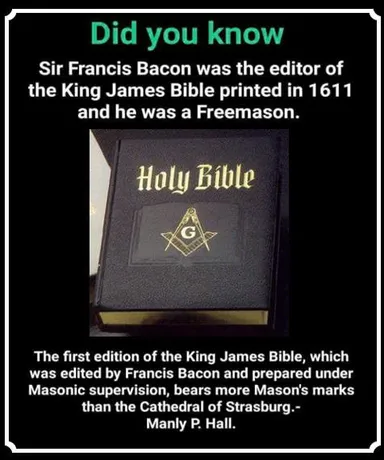
bible_was_redacted.jpg

cathar_suppression.jpg
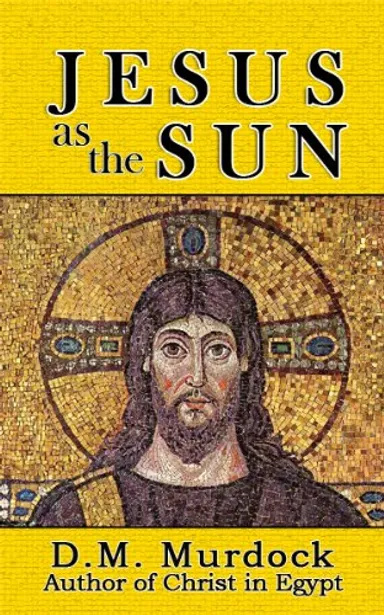
christ_is_the_sun.jpg
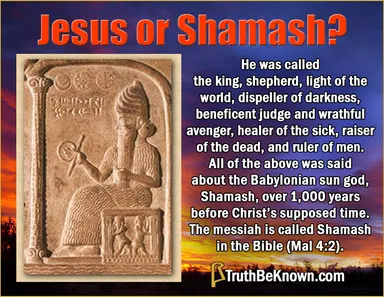
christ_is_the_sun10.jpg
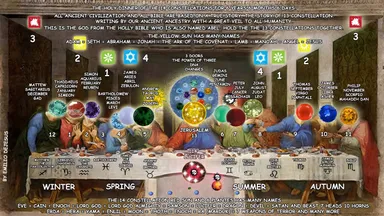
christ_is_the_sun11.jpg
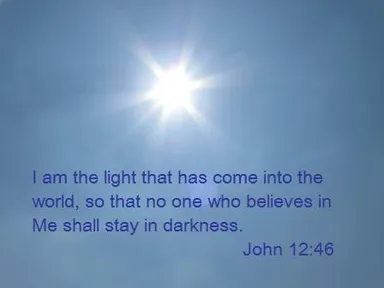
christ_is_the_sun12.jpg
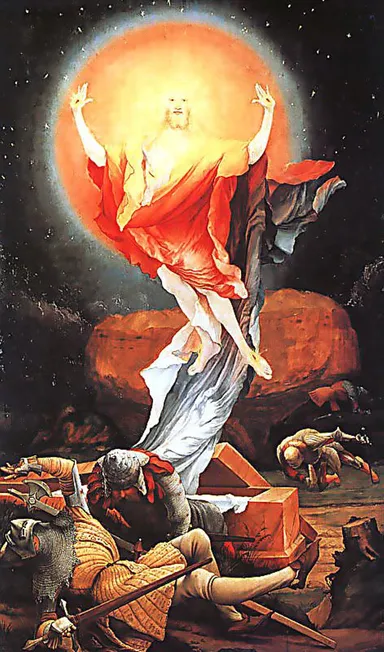
christ_is_the_sun13.jpg
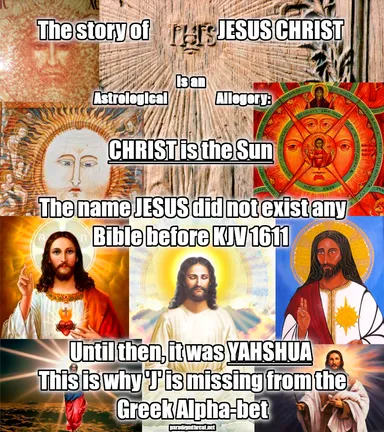
christ_is_the_sun2.jpg
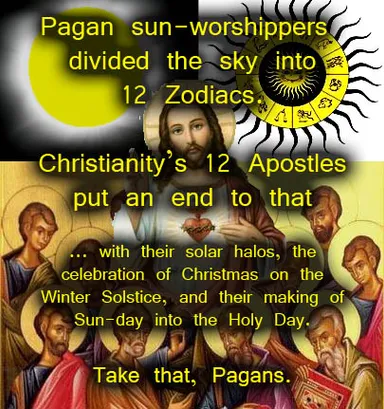
christ_is_the_sun3.jpg
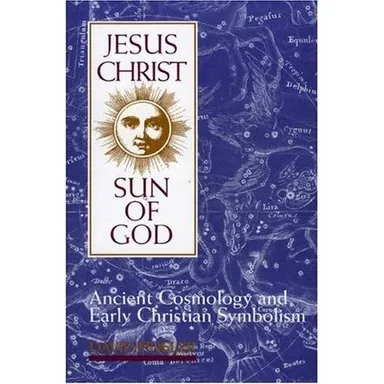
christ_is_the_sun5.jpg
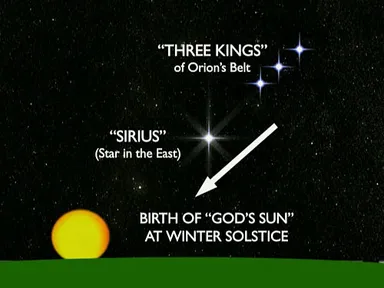
christ_is_the_sun6.jpg
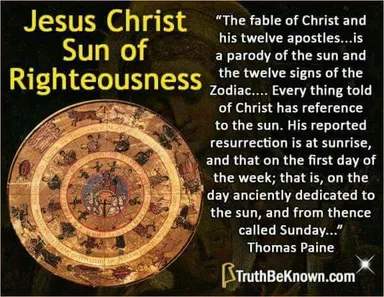
christ_is_the_sun7.jpg
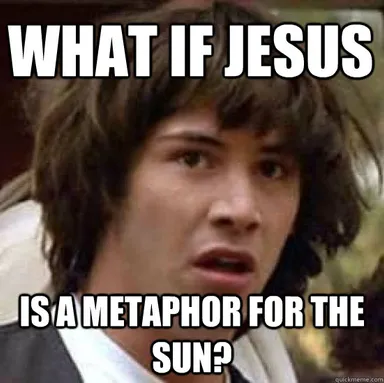
christ_is_the_sun9.jpg
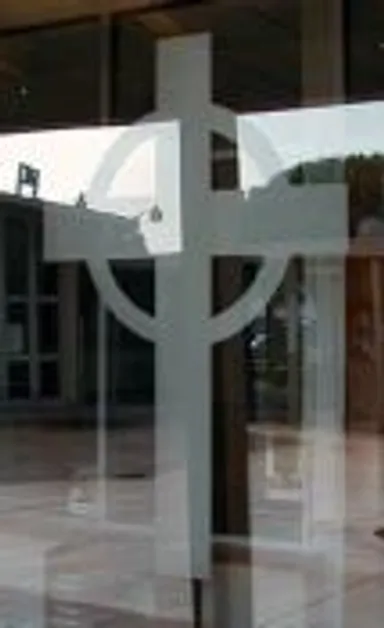
christian_cross.jpg
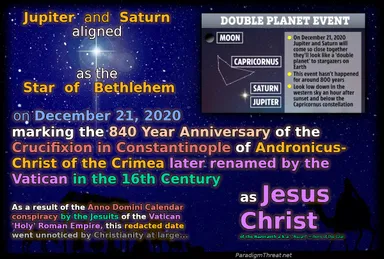
conjunction.jpg
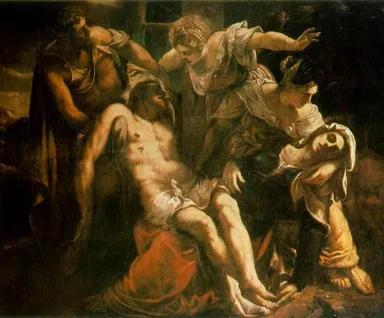
crucifixion_descent_tintoretto_1565.jpg
The Crucifixion by Tintoretto is a large painting in oil on canvas, installed in the Sala dell'Albergo of the Scuola Grande di San Rocco, Venice. It is signed and dated 1565. This painting is one of the most dramatic versions of the Crucifixion in the history of Christian religious art. [source]
crucifixion_descent_tintoretto_1565.md
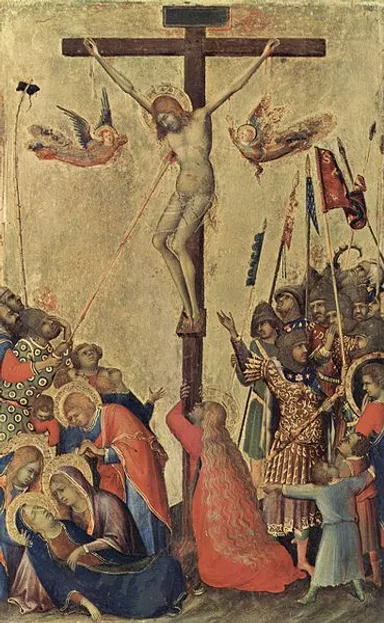
crucifixion_simone_martini_066.jpg

crusades_delacroix.jpg
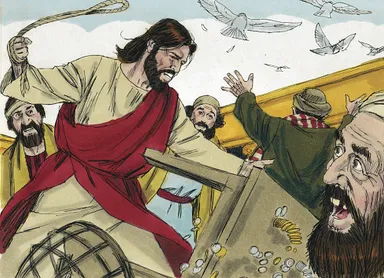
flipping_tables.jpg
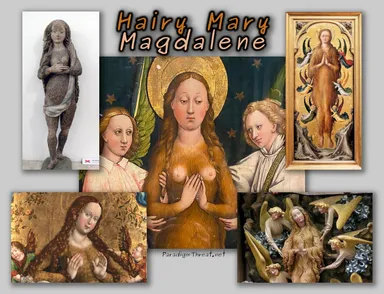
hairy_mary.jpg
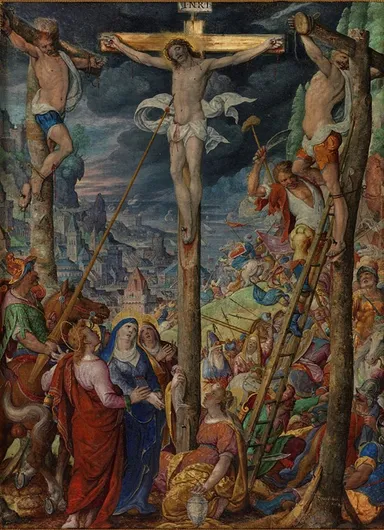
hans_bol_crucifixion_1587.jpg
The crucifixion was meant to end the influence of Giants like Andronicus Christ by allowing the smaller humans to poke, stab, and laugh at the giants with impunity.
hans_bol_crucifixion_1587.md
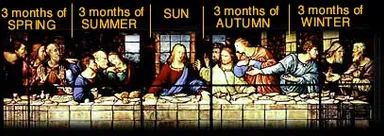
lastsupper.jpg
"The very thoughts of a person like me are crimes against the state. All I have to do is think, and immediately I become guilty."
Thomas Merton
A Signed Confession of Crimes Against the State
The Meddlesome Priest
by Geri Roberts
Any Catholic who was alive in the later half of the twentieth century and read anything at all about the Catholic Church knew who Thomas Merton was. He was a contemplative Trappist monk and a walking power-house of Christian spirit. He was probably responsible for more conversions to the Catholic faith and vocations than any other person in history. He was the reason I came within a hair's breadth of entering a Trappestine monastery. I didn't become a nun but I did name my son after him. His books were influential and became enormous sellers all over the world. He was often compared to St. Augustine of Hippo because, like Augustine, Merton seems to have led a wild youth with a later conversion to Catholicism, and then writing about it all. Soon before his death in the late 1960s, Merton had been writing articles and letters critical of the United States and the Vietnam War. .
I am a cynical old lady who tries to question everything yet I have no doubt at all that Merton was a genuinely honest man who believed in what he wrote. How do I know this? Because on December 10, 1968 he was murdered by the Vatican. Surprisingly, the strong possibility that he was murdered is actually mentioned in Wikipedia. And a book was written by David Martin and High Turley: "The Martyrdom of Thomas Merton: An Investigation".
A few years ago I was ordering a book by David Martin, "The Assassination of James Forrestal" when I noticed Martin's other book on Merton. It was a shock With all my suspicions that the Vatican was responsible for many horrendous things, I had never even suspected THAT one. When it comes to conspiracy theories, the Vatican is truly a gift that just keeps on giving.
The official story was that Merton had stepped out of the shower and managed to electrocute himself with an electric fan. I recall reading this in the newspapers at the time. I didn't question the story but was upset since I was always reading his books and I felt that I knew him. His death took place in Thailand and the attitude was that, well, oversea electric appliances could be dangerous. My father, who was an electrician, just said "I bet they killed him because he was getting ready to leave the Church." I didn't ask who "they" were. I just laughed because I thought he was joking. Now I know he wasn't joking at all.
Oddities about the death weren't discussed for a while. The Catholic Church is very good at covering up things, especially with its handy "vow of obedience" that the members of its orders have to take. But it emerged that Merton's body had been found lying with the arms and legs arranged neatly, palms down, and covered with cuts and bruises, the fan lying across him and still running. There was, most tellingly, a deep and unexplained wound on the back of his head. Much like a bullet entry wound. However, no autopsy was ever performed and the body--get this---was flown back to the States on an AMERICAN MILITARY PLANE. Happens all the time to priests who write anti-government articles and then die mysteriously.
There are various rumors floating around the internet saying that Merton had committed suicide by electric fan because he had health problems and was in love with a young (female) nurse. Compared to what usually is revealed about Catholic priests, a love affair with an adult woman is a sign of glorious good health, in my opinion.
The consensus seems to be that Merton was murdered by the CIA because his antiwar writing was becoming embarrassing to the U.S. Government. A CIA assassin is supposed to have confessed on his deathbed to killing Merton. CIA assassins seem to do this a lot but I somehow doubt this has ever really happened. Not because CIA assassins don't have anything to confess, but because it tidies things up so conveniently for certain guilty parties.
In the 1964 film Beckett, King Henry of England wails, "Will no one rid me of this meddlesome priest?" referring to the way Thomas Beckett was making Henry's life a misery. The King seems not to notice a group of knights, the most dedicated of his brown nosers, grabbing their swords and rushing off to the Cathedral to whack Beckett. In the story Henry is rightly accused of being responsible for the murder.
But who really was responsible for ordering Merton's death? I'm not adverse to pinning any crime on the United States government, but I can't see them as being behind this one, although they could have helped out. I believe that Merton WAS planning to leave the Church and the Church, in a state of tumult after Vatican II, was bleeding priests and nuns out of every orifice. The departure of a figure like Merton, especially since he would certainly write about it, would cause grave consternation at the highest levels of the Church.
Merton had been seriously researching Eastern religions and finding much to admire. He was always having problems getting approval for his books and writings from his Abbot. Because of the sacrament of confession, other priests were of course aware of what he was thinking and planning. And there is circumstantial evidence that the Trappist order was aware of and therefore condoned the murder. It could not have been committed without involving them. And the head of the order, the abbot general of Citeaux, lives in Rome.
Also, the earnings from Merton's books was substantial and, I believe, went to the Cistercian order as long as he was a member. That would change if he left. If he died while a monk the money came to them forever and ever since Merton seemed to have no close family since his mistress and son had been killed in the London Blitz before he entered the Church.
The Trappist order could lay these accusations to rest simply by permitting Merton's body, which is buried at the Abbey of Gethsemani in Kentucky, to be exhumed and examined by a forensic pathologist. But there is no indication that will ever happen.
Not a man to prevaricate, I can't imagine that Merton would remain in a life in which he no longer believed. I think that the conference in Bangkok, where he was assassinated, was the first time he had been permitted to leave his monastery in a very long time. So he was closely watched. And the trip would have provided an opportunity to arrange an "accident."
There is strong evidence that the Vatican did away with this "meddlesome priest" but will never be called to account. No surprise there. Recently I have been looking into the deaths of two other famous individuals who also were probably murdered by the Vatican. One is Albino Luciani, better known at Pope John Paul I. The other is Abraham Lincoln.
Stay tuned for updates! . .
merton.md
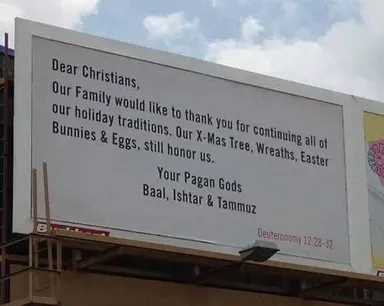
stolen.jpg
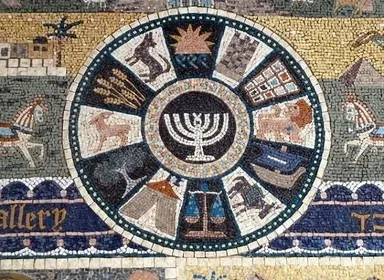
twelve_tribes_zodiac.jpg
12 Tribes of Israel/Disciples of Jesus are based on the 12 signs of the Zodiac
twelve_tribes_zodiac.md
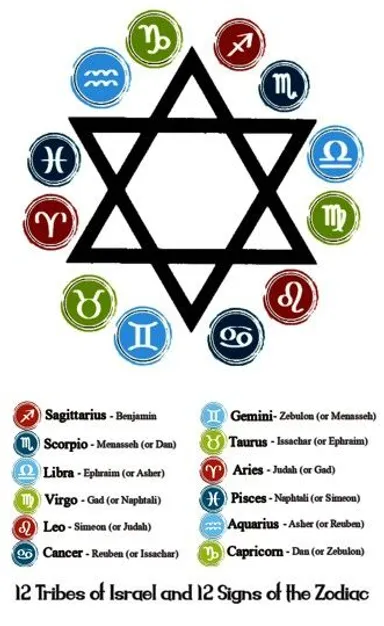
twelve_tribes_zodiac2.jpg
